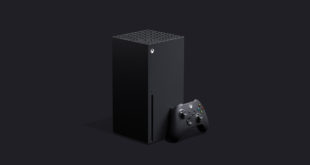62 per cent of the British population now own a smartphone and 29.3 per cent a tablet.
In fact, in the latest data, smartphones accounted for 83 per cent of all mobile sales, demonstrating their growing dominance.
There has been much debate recently about consumers’ interaction with smart devices, with most people not using their phones or tablets to the max. However, what is clear is the ‘smart generation’ is increasingly using these portable devices for gaming.
40.7 per cent of mobile owners use their phones for gaming, up from 32.6 per cent in 2011. This has meant that 3.9 per cent of games are now bought for smart devices – an increase of 1.2 percentage points over the past year. And this looks set to rise.
In the past year, the number of games bought for phones and tablets has increased by 11.7 per cent. This contrasts markedly with the 27.1 per cent decline we have seen in sales of physical games over the same period.
Growth is, in the main, being driven by the increasing number of smart device shoppers, with a quarter more consumers entering this market in the past year.
"In the past year, the number of games bought
for phones and tablets has increased by
11.7 per cent. This contrasts markedly with
the 27.1 per cent decline we have seen in
sales of physical games over
the same period."
For developers this is good news. New customers contributed an extra 360,000 games sales in the 24 weeks ending February 17th and are the main reason this part of the market is flourishing. Continuing to appeal to new customers will be crucial going forward, particularly as there are signs that current customers are buying less when compared
to last year.
Existing shoppers bought 239,000 fewer games over the latest 24-week period compared with last year. It may be that this group moved towards free games rather than downloading fewer paid-for apps, something not captured in these figures.
We expect smartphone penetration to increase, which means there will be a larger potential pool of customers to target for mobile gaming.
These shopper behaviours are obviously interesting for those developing content for smart devices. But what are the implications for the wider games market?
The latest data shows that there is a close link between the shoppers buying gaming apps and traditional gamers using consoles.
Of the 360,000 units bought by shoppers new to phone and tablet gaming, half of this volume came from users who are continuing to buy games on other platforms. Two thirds of this group are Xbox 360 or PlayStation 3 users, and similarly a third are Wii gamers. This is good news for manufacturers, as it means most consumers are willing to use more than one platform if each device can be used for different reasons. It also demonstrates that there is a clear demand for ‘smart games’ from the core gamer.
There are already some games available on both platforms, albeit shorter versions, such as FIFA or Football Manager. But developing more cross-platform games, particularly for flagship products, will be a good way of capturing these consumers in the future. Developers should be looking at limited apps that entice the consumer to progress to the console game.
This crossover between smart gamers and traditional gamers also further demonstrates the need for compatible devices and products. We have already started to see the potential of this via Microsoft’s SmartGlass.
"While a console offers something different to
smartphone gaming, consumers are struggling
to distinguish the benefits of a handheld device
over a smartphone or tablet – a problem that is
only set to increase as smart
technologies develop."
Despite this good news for consoles, there have been implications for the handheld market. A fifth of new shoppers entering the smart market are gamers who have switched away from DS or PSP/Vita. Very few handheld gamers add smartphones and tablets to their repertoires, choosing to move away in greater numbers than expected.
Consumer demographics may offer some explanation as to why people are making this switch. The handheld consumer is likely to be a child, with many of the main games purchasers buying for their children. When we look at smart device buyers it is a similar picture, with shoppers much more likely to be children or young people. In fact, families were one of the fastest-growing buyer groups for smart games in the past year.
This suggests that, while a console offers something different to smartphone gaming, consumers are struggling to distinguish the benefits of a handheld device over a smartphone or tablet – a problem that is only set to increase as smart technologies develop.
The demographics of smart gamers are interesting. In many ways they resemble the same types of gamers we saw enter the market for the first time with the launch of the Wii a few years ago. They are also a group where we have seen significant sales declines recently. Perhaps gaming on smart devices could be a new way of bringing these people back in to the market?
At this stage, it looks like the advent of smartphone gaming won’t have too many negative implications for the existing market, with a lot of gamers enjoying the benefits of different platforms. It is only in the handheld market where there is cause to be concerned. However, if manufacturers can assert the benefits of these platforms to consumers then they should continue to have a place in the market.

 MCV/DEVELOP News, events, research and jobs from the games industry
MCV/DEVELOP News, events, research and jobs from the games industry



